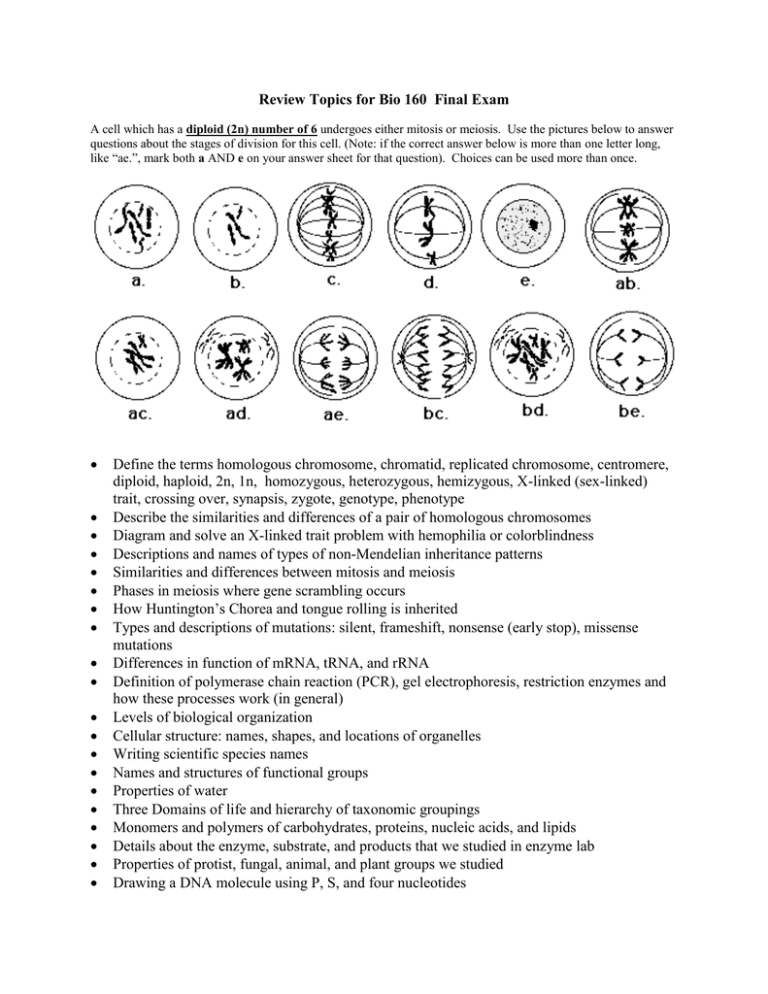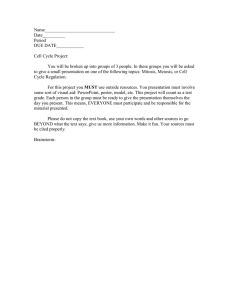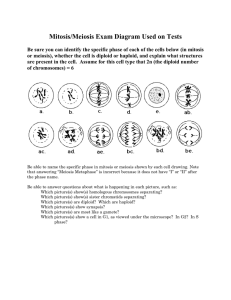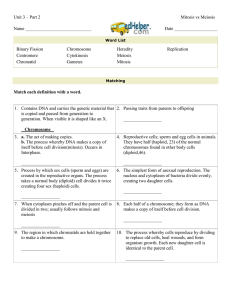Review Topics for Bio 160 Final Exam
advertisement

Review Topics for Bio 160 Final Exam A cell which has a diploid (2n) number of 6 undergoes either mitosis or meiosis. Use the pictures below to answer questions about the stages of division for this cell. (Note: if the correct answer below is more than one letter long, like “ae.”, mark both a AND e on your answer sheet for that question). Choices can be used more than once. Define the terms homologous chromosome, chromatid, replicated chromosome, centromere, diploid, haploid, 2n, 1n, homozygous, heterozygous, hemizygous, X-linked (sex-linked) trait, crossing over, synapsis, zygote, genotype, phenotype Describe the similarities and differences of a pair of homologous chromosomes Diagram and solve an X-linked trait problem with hemophilia or colorblindness Descriptions and names of types of non-Mendelian inheritance patterns Similarities and differences between mitosis and meiosis Phases in meiosis where gene scrambling occurs How Huntington’s Chorea and tongue rolling is inherited Types and descriptions of mutations: silent, frameshift, nonsense (early stop), missense mutations Differences in function of mRNA, tRNA, and rRNA Definition of polymerase chain reaction (PCR), gel electrophoresis, restriction enzymes and how these processes work (in general) Levels of biological organization Cellular structure: names, shapes, and locations of organelles Writing scientific species names Names and structures of functional groups Properties of water Three Domains of life and hierarchy of taxonomic groupings Monomers and polymers of carbohydrates, proteins, nucleic acids, and lipids Details about the enzyme, substrate, and products that we studied in enzyme lab Properties of protist, fungal, animal, and plant groups we studied Drawing a DNA molecule using P, S, and four nucleotides Properties of a living thing Adding hydrogens to a molecule based on covalent bonding rules Two-factor genetic cross Review molecules below





